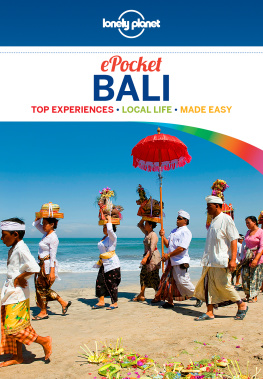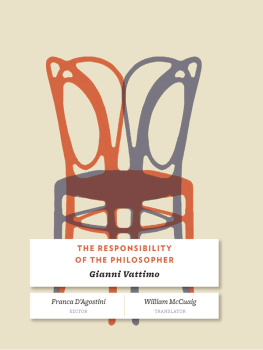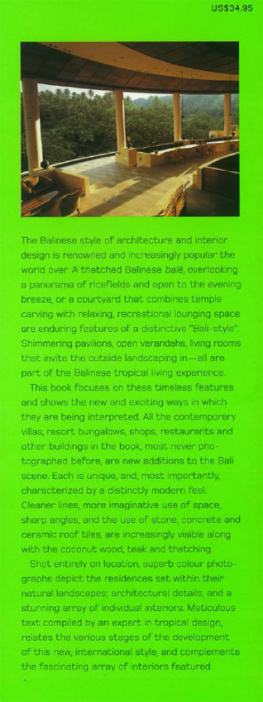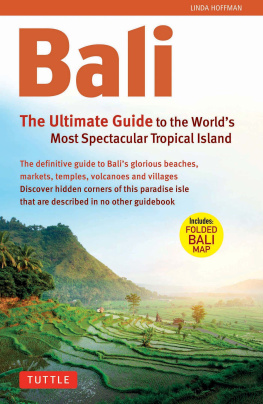Gianni Francione - Bali Living
Here you can read online Gianni Francione - Bali Living full text of the book (entire story) in english for free. Download pdf and epub, get meaning, cover and reviews about this ebook. publisher: Tuttle Publishing, genre: Home and family. Description of the work, (preface) as well as reviews are available. Best literature library LitArk.com created for fans of good reading and offers a wide selection of genres:
Romance novel
Science fiction
Adventure
Detective
Science
History
Home and family
Prose
Art
Politics
Computer
Non-fiction
Religion
Business
Children
Humor
Choose a favorite category and find really read worthwhile books. Enjoy immersion in the world of imagination, feel the emotions of the characters or learn something new for yourself, make an fascinating discovery.
- Book:Bali Living
- Author:
- Publisher:Tuttle Publishing
- Genre:
- Rating:4 / 5
- Favourites:Add to favourites
- Your mark:
- 80
- 1
- 2
- 3
- 4
- 5
Bali Living: summary, description and annotation
We offer to read an annotation, description, summary or preface (depends on what the author of the book "Bali Living" wrote himself). If you haven't found the necessary information about the book — write in the comments, we will try to find it.
Bali Living — read online for free the complete book (whole text) full work
Below is the text of the book, divided by pages. System saving the place of the last page read, allows you to conveniently read the book "Bali Living" online for free, without having to search again every time where you left off. Put a bookmark, and you can go to the page where you finished reading at any time.
Font size:
Interval:
Bookmark:



The Javanese joglo , a pavilion-style structure of great integrity, finds new life in a garden estate in Bali.

This modern holiday home, built in a verdant rice field seting, employs a floating wood shingle roof that stretches over the main structure.

Published by Periplus Editions (HK) Ltd, with editorial offices at 61 Tai Seng Avenue, #02-12, Singapore 534167.
Copyright 2008 Periplus Editions (HK) Ltd Photographs Masano Kawana
All rights reserved. No part of this publication may be reproduced, stored in a retrieval system or transmitted in any form or by any means, electronic, mechanical, photo-copying, recording or otherwise without prior permission of the publisher.
ISBN: 978-1-4629-0616-1 (ebook)
Distributed by
North America, Latin America and Europe
Tuttle Publishing, 364 Innovation Drive, North Clarendon,
VT 05759-9436 U.S.A.
Tel: 1 (802) 773-8930; Fax: 1 (802) 773-6993
info@tuttlepublishing.com
www.tuttlepublishing.com
Japan
Tuttle Publishing, Yaekari Building, 3rd Floor,
5-4-12 Osaki; Shinagawa-ku; Tokyo 141 0032
Tel: (81) 03 5437-0171; Fax: (81) 03 5437-0755
tuttle-sales@gol.com
Asia Pacific
Berkeley Books Pte Ltd, 61 Tai Seng Avenue,
#02-12, Singapore 534167
Tel: (65) 6280 1330; Fax: (65) 6280 6290
inquiries@periplus.com.sg
www.periplus.com
11 10 09
5 4 3 2
Printed in Singapore

An inspirational example of how ancient wooden structures find new life in todays Bali. This indoor/outdoor living pavilion retains the buildings original carved roof and old columns, but is updated with modern lighting and low-level seating in neutral colours.

Even though the twin roofs attract the eye first, it is the wonderfully fluid transition of indoor and outdoor spaces that makes this house the epitome of modern tropical living today.
Contents
Bali at The Crossroads
Bali has been labelled many thingstropical paradise, island of the gods, an idyllic Shangri-la, and morebut never before have such words as urban, conurbation, traffic-clogged and busy seemed appropriate. Earlier writers have tended to wax lyrical about Balis ruralism, its rice field landscapes, its otherness. Theyve discussed its largely intact culture, its traditional architecture, mores and religious practices and its other-wordliness that makes such a refreshing contrast with much of the rest of the world.
Rarely has it been referred to in terms of building booms, urbanisation and pollution. Commercialism, maybe, but certainly not rampant consumerism.
That seems to be changing now. Many of the mangroves and rice fields have disappeared in the Denpasar, Sanur and Seminyak areas, being replaced by highways and buildings. Ubud is no longer a sleepy artists colony; it sprawls ever outwards. And many of Balis sacred spots around its ancient temples have seen large, commercial developments in recent years.
Before this all sounds too depressing, it should be noted that there are still plenty of spaces on the island that continue to follow a quiet rhythm away from the madding crowd, as it were. Kintamanis slopes are still cool, pine-scented and sweet; the volcanoes are largely untouched. Much of the islands interior is still jaw-droppingly beautiful with undulating rice terraces and the north, east and west coasts (if you travel far enough) are fairly undisturbed.

Tropical transparency at its best: This holiday home is characterised by the copious use of glass for indoor/outdoor living, but the eye returns again and again to the two monolithic walls rising from the central pool. They anchor the surrounding structures with a striking, elemental originality.

A compact home in Balis Seminyak area illustrates how tropical living is becoming more modern and less Balinese in style in certain parts of the island. More influenced by the Mediterranean than the tropical, it contains not a hint of alangalang thatch, carved wood or ethnic furnishing.
But, developed and developing, it is. Two previous books, Bali Modern and Bali Houses , Iooked at the changing face of Balis increasingly international architectural offerings, and, in many ways, this book continues the journey. All the structures featured herein have been built post millennium, and all represent to some degree the continuing modernist trend. Whether it is encapsulated in a restaurant, a private villa, a mini-hotel, a club, a garden extate or a residential home is irrelevant.
Yesterdays primitive thatched huts are increasingly being replaced by large hotels, resorts, private villa estates and sophisticated homes that in many cases would not be out of place in more urban surrounds. They employ a certain sophistication in building techniques and materials, and the interiors are more cosmopolitan or designer authentic than rice field ethnic. This is undoubtedly a major attraction for the more discerning vacationer seeking to rent a villa for a tropical vacation.
Certainly, Bali leads the tropical market in exclusive private villa rentals, but there is another market that is growing even faster: that of the smaller village where a series of almost identical rental villas sits cheek by jowl on a fairly small plot of land. Architecturally, these are often fairly urban in style and they cater to the growing market from both within Indonesia and from other Asian nationals, such as Singaporeans, Malaysians, Koreans, Chinese, Taiwanese and the like.
This market segment is, for the most part, represented by a fair number of stereotyped and standardized units that are less tropical than their predecessors. People are attracted to the idea of a relaxing long weekend or week in Bali, but they dont want to leave their creature comforts behind. Hence, the number of urban box-like residences that are architecturally less creative and more utilitarian in functionality continues to grow. Such homes are also characterised by an increasingly homogenized style of interior design that features furnishings from the must-have imported brands now available island-wide. The general look is more business-like, perhaps a little more in the style of Asian apartment living.
Whatever one thinks about this trend, and the types of architecture it is producing, the island still continues to conceive and construct some buildings that are architecturally innovative, forward-thinking and, indeed, beautiful. For the main part, this book showcases a selection of private residences, but there are also a few public places that merit inclusion. Each is different in style: some retain links with the early tropical forms so beloved of the traditionalists, while others tend to be cleaner, more pared down, even minimalist. Theres also the retro look (harking back to the past but still firmly rooted in the present), the glass-and-steel metropolitan configuration, and the updated rustic trend.
Font size:
Interval:
Bookmark:
Similar books «Bali Living»
Look at similar books to Bali Living. We have selected literature similar in name and meaning in the hope of providing readers with more options to find new, interesting, not yet read works.
Discussion, reviews of the book Bali Living and just readers' own opinions. Leave your comments, write what you think about the work, its meaning or the main characters. Specify what exactly you liked and what you didn't like, and why you think so.













